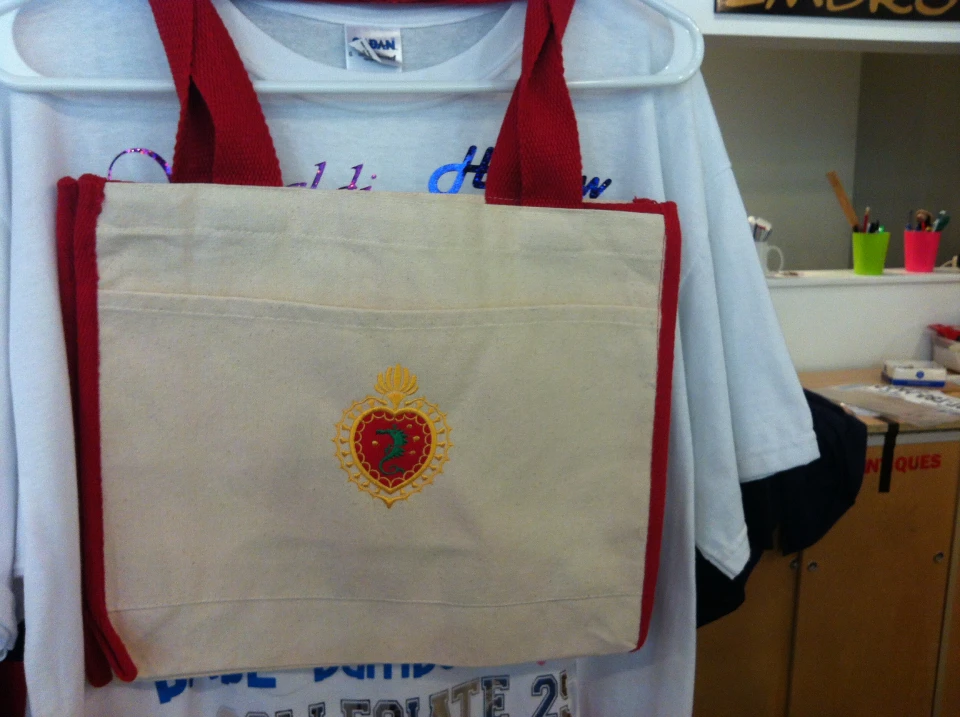Personalized School Uniforms with High-Quality Embroidery Solutions
Personalized School Uniforms with High-Quality Embroidery Solutions
Blog Article
The Art of Personalized Needlework: Unlocking the Tricks to Creating Distinct and Remarkable Layouts
Needlework, a craft steeped in practice and virtuosity, holds within its detailed stitches the power to transform textile right into a canvas of unique expression. The tricks to developing custom-made embroidery layouts that astound the eye and leave a long lasting perception lie in a delicate equilibrium of method, creative thinking, and interest to detail. As we look into the world of custom-made needlework, we uncover the nuanced interplay between string option, stitch intricacy, and layout customization that boosts a simple garment to a masterpiece. Join us on a trip through the art of custom-made embroidery as we unravel the mysteries behind crafting absolutely memorable and unique developments.
Selecting the Right Needlework Threads
When choosing embroidery strings, what essential aspects should you think about to make sure the very best outcomes for your custom styles? The choice of needlework string is crucial in establishing the last outcome of your embroidered layout. Among the main factors to consider is the material of the thread. Various products such as cotton, polyester, rayon, and silk offer varying levels of luster, toughness, and appearance. It is important to pick a string material that matches the textile you are embroidering on and lines up with the wanted look of the design.
Thicker strings can add measurement and texture to your layout, while finer strings are ideal for elaborate information and little message. Additionally, thinking about the shade fastness and washability of the string is important to make sure that your custom styles maintain their top quality and vibrancy over time.
Checking Out Different Stitch Methods
To look into the realm of 'Exploring Different Stitch Methods', one have to grasp the intricacies and subtleties that each sewing approach brings to the art of embroidery. Different stitch methods not just include aesthetic rate of interest but likewise contribute to the overall texture and dimension of the style. One preferred stitch strategy is the satin stitch, which involves carefully stuffed parallel stitches to create a smooth and glossy surface area, ideal for filling in shapes and producing strong details.
On the various other hand, the backstitch is a functional technique often made use of for outlining and including great details. It entails stitching backwards to develop a solid line of needlework. Additionally, the French knot stitch adds a responsive component to styles, best for creating distinctive accents like flower facilities or decorative touches.
Checking out various stitch methods enables embroiderers to have fun with light, darkness, and deepness within their designs, raising the aesthetic charm and imaginative high quality of their embroidery projects. By grasping different stitching approaches, one can unlock limitless possibilities for developing unique and memorable personalized needlework pieces.
Incorporating Personalized Layout Aspects
Having explored the ins and outs of various stitch strategies such as the satin stitch, backstitch, and French knot, the focus now shifts in the direction of integrating customized layout components moved here in custom-made embroidery tasks. Personalized design components play a critical role in making needlework projects truly special and memorable. One method to integrate customization is by adding initials, names, or significant days to the layout. This not just adds a personalized touch however likewise improves the emotional value of the needlework item.
One more means to integrate customized style elements is by including icons or motifs that hold unique definition to the recipient or show their passions and character. As an example, integrating a preferred flower, pet, or hobby-related symbol can make the embroidery design extra purposeful and individualized. Furthermore, choosing shades that resonate with the recipient or line up with the desired style can further boost the personalization of the embroidery job.
Understanding the Art of Shade Control

One key facet of shade control is understanding color theory. This includes knowing exactly how various colors engage with check my source each other, the emotions they communicate, and exactly how they can be integrated to create aesthetically appealing styles. By using color concept principles, embroiderers can create harmonious shade schemes that enhance the total look of the link layout.
In addition, taking note of comparison is important in shade control. Utilizing contrasting shades can help certain aspects of the style pop, boost legibility, and create an aesthetically dynamic needlework item. By mastering the art of color control, embroiderers can raise their styles and create unforgettable pieces that reverberate with customers and visitors alike.
Enhancing Texture With Advanced Needlework Stitches
French knots, for instance, are excellent for adding small, elevated dots to your layout, mimicking the look of beads or producing a distinctive surface area. Bullion knots, on the other hand, can be utilized to create twisted, ropelike components that add a glamorous feeling to the embroidery. Seed sewing involves tiny, scattered stitches that can complete locations with a speckled appearance, while turkey job develops cosy, dimensional accents reminiscent of pet hair or vegetation. Try out these innovative needlework stitches permits you to push the limits of traditional embroidery and produce really unique and visually appealing textures in your layouts.
Verdict
To conclude, the art of personalized needlework involves a combination of picking the appropriate strings, checking out different stitch methods, incorporating tailored design elements, mastering shade coordination, and boosting texture with sophisticated stitches. By understanding and implementing these crucial elements, embroiderers can develop special and remarkable designs that display their creativity and skill. Needlework lovers can open the secrets to creating lovely and bespoke pieces that stick out and leave a long-term impression.
Report this page